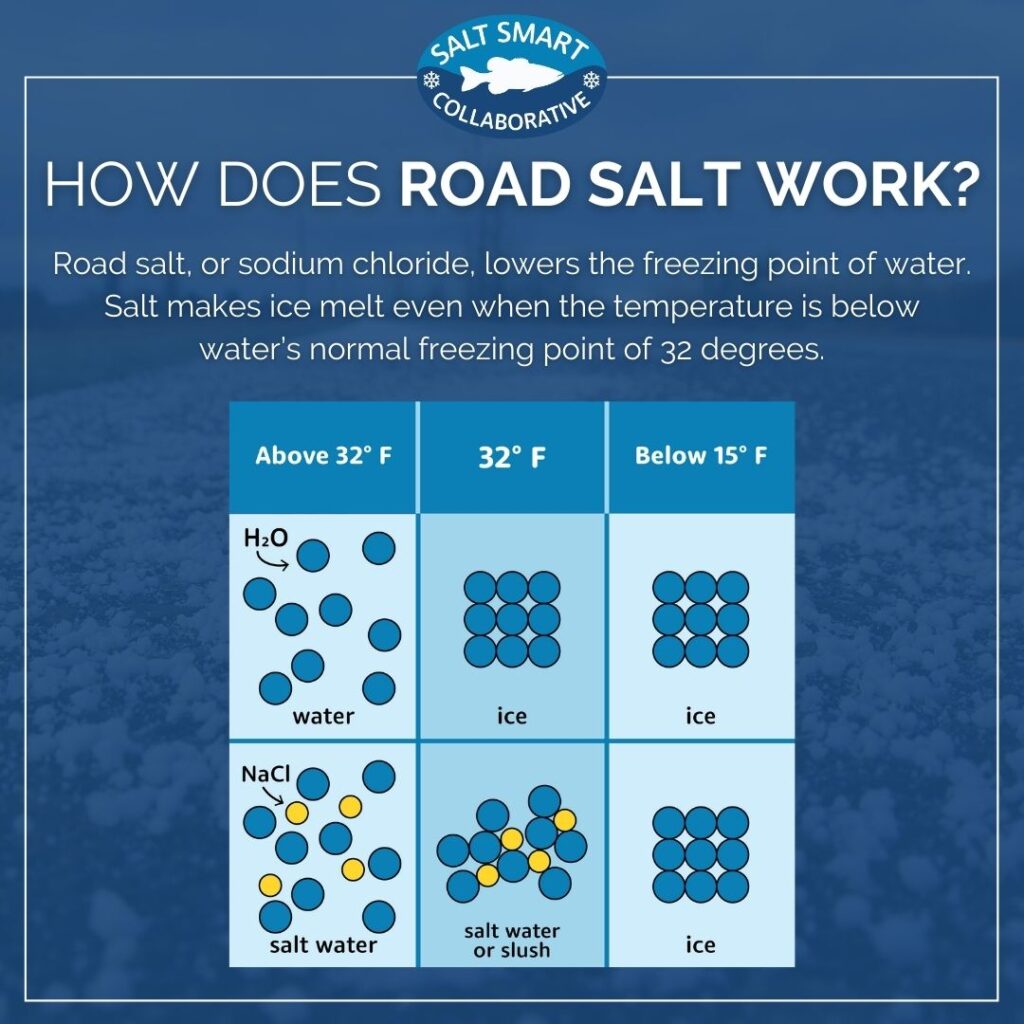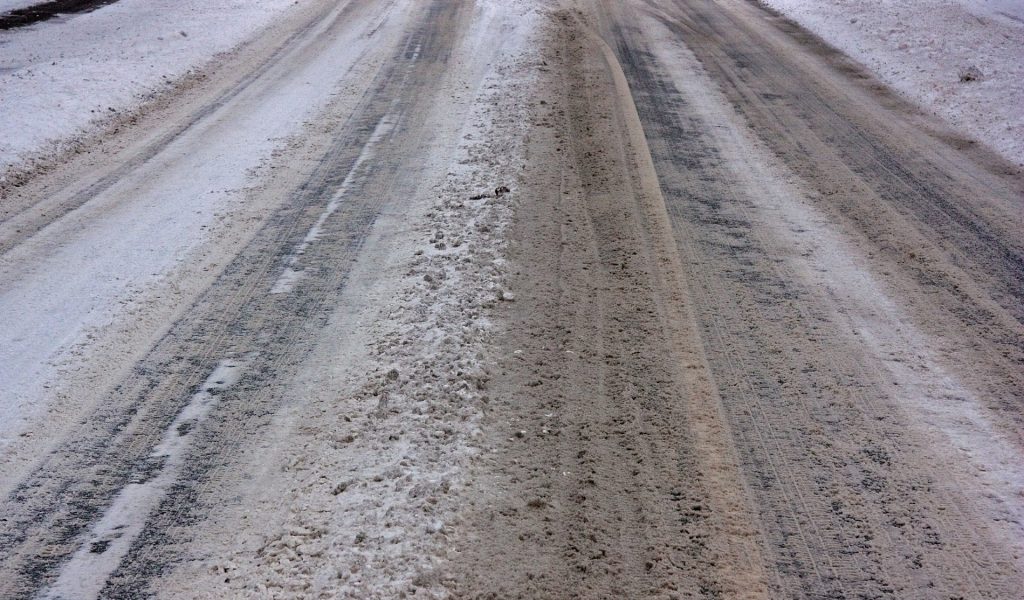We want to stay safe following a winter snow storm, so we clear roads, parking lots, driveways and sidewalks by plowing, shoveling and using salt. Have you ever wondered how salt melts ice?
How Road Salt Works
The freezing point of water is 32 degrees F. When the temperature drops to 32 degrees or below, hydrogen bonds between water molecules strengthen. The molecules arrange themselves into a crystalline structure, and liquid water becomes solid ice. When the temperature rises above 32 degrees F, ice turns to liquid as the bonds between H2O molecules loosen and the structure becomes more fluid.
Road salt, or sodium chloride, works by lowering the freezing point of water, causing ice to melt even when the temperature is below water’s normal freezing point of 32 degrees.
When salt is applied, it dissolves into separate sodium and chloride ions that disrupt the bonds between water molecules. As the ions loosen hydrogen bonds, the ice melts into water.
However, sodium chloride becomes much less effective when the pavement temperature drops below 15 degrees. At low temperatures, it’s best to switch to salt formulated for lower temperatures that contain magnesium chloride (MgCl2) or calcium chloride (CaCl2). MgCl2 and CaCl2 are made up of 3 ions, while sodium chloride (NaCl) is made up of 2 ions. More ions mean more melting power since there are more ions to disrupt bonds between water molecules.

Use Salt, But Be Salt Smart
Salt can play a key role in removing snow and ice to clear roads, parking lots, sidewalks, and driveways. However, using salt is not without consequence. Each year our local rivers and lakes are getting saltier and saltier. When rain falls on streets and other salted surfaces, it picks up the salt and brings it into storm drains that connect directly to rivers.
Winter road salt affects the water quality of these rivers and can even hurt the fish and aquatic insects that live there. That’s why it’s important to not use any more salt than is necessary to melt snow and ice.
Key Takeaways:
- Salt works by lowering the freezing point of water.
- Sodium chloride becomes much less effective below 15 degrees. At low temperatures, it’s best to which to a deicer that contains magnesium chloride or calcium chloride.
- Be Salt Smart to limit your environmental impact. Use the amount of salt necessary to melt snow and ice. Don’t go overboard—after a certain point, more salt doesn’t mean more melting power.




